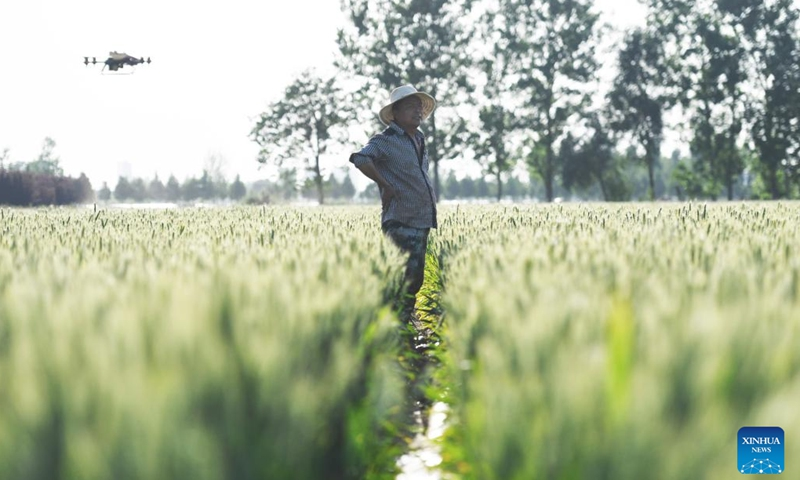
Exhibition time: 17-19 March, 2026 Shanghai, China
 中文
中文

Exhibition time: 17-19 March, 2026 Shanghai, China
 中文
中文

Key words of the passage: China; grain; farmer; subsidie; harvest
China is expected to achieve a bumper harvest of summer grain despite the impact of COVID-19 outbreaks in some areas, underscoring the country's capacity to ensure grain security amid tight global supplies mainly due to record hot weather and the Russia-Ukraine conflict.
Around 80 percent of the grain in Southwest China has been harvested, while harvesting of the grain in the middle and lower reaches of the Yangtze River has started, according to the Ministry of Agriculture and Rural Affairs (MOA).
Grain in the Huang-Huai-Hai region, which represents about three-quarters of the country's summer grain output, is about to mature.
"The summer wheat will be harvested in about half a month. Although there are some COVID-19 cases, that has had little impact on spring farming. The output this year is expected to be the same level as last year," a farm owner surnamed Yao in North China's Hebei Province, who has around 70 mu (4.7 hectares) of land for growing wheat, told the Global Times on Sunday.
Thanks to effective policy support, the wheat crop has been better than expected, so a bumper harvest of summer grain will be achieved despite delayed planting of winter wheat in multiple places, said Zhu Enlin, deputy head of the Department of Crop Production of the MOA, according to a CCTV report.
The authorities have raised the national minimum purchase price of wheat to 115 yuan ($17.18) per 50 kilograms, up 2 yuan year-on-year, according to data from the National Food and Strategic Reserves Administration.
The slight price hike is based on farming cost increases and soaring international prices, while also reflecting the authorities' goal of maintaining the orderly and healthy operation of the grain market, Li Guoxiang, a research fellow at the Rural Development Institute under the Chinese Academy of Social Sciences, told the Global Times on Sunday.
Due to higher costs for fertilizers, machinery and labor, the market purchase price of wheat has increased to around 2.8 yuan per kilogram, Yao said, and in some areas it has even soared to 3.2 yuan per kilogram.
Considering the trend of agricultural material prices and the situation of agricultural production, the central government will grant subsidies worth 10 billion yuan to farmers engaged in grain cultivation in order to support summer harvests and autumn plowing, and further spark their motivation for farming, the Ministry of Finance said on Sunday.
The central government has allocated an unprecedented amount of more than 6 billion yuan to summer grain production this year, and 800 million yuan of special funding to support the green production of grain.
China's summer wheat harvest comes amid a global supply crunch due to the joint effects of the prolonged global pandemic, the Russia-Ukraine conflict, and extreme hot weather in some countries, including India and France.
UK newspaper the Telegraph reported on Friday that there are only 10 weeks of global wheat supply left in stockpiles, citing agricultural data firm Gro Intelligence.
Following India's recent ban on wheat exports, Afghanistan was reported on Thursday to have suspended wheat exports and trade to avoid food shortage.
"With wheat output at around 130 million tons each year, China's wheat has achieved full self-sufficiency, allowing for a small percentage of wheat imports mainly for variety adjustment," Li said.
Given the tight grain supply around the world, China will likely cut imports this year, he said.
According to data from the General Administration of Customs, China's imports of wheat dropped 22.4 percent year-on-year in April to 700,000 tons.
Sun Heng, a wheat analyst at the National Grain and Oil Information Center, told the Global Times in a recent interview that the country's wheat inventory is at a record high level, which can meet domestic demand for more than a year.
Source: Global Times
